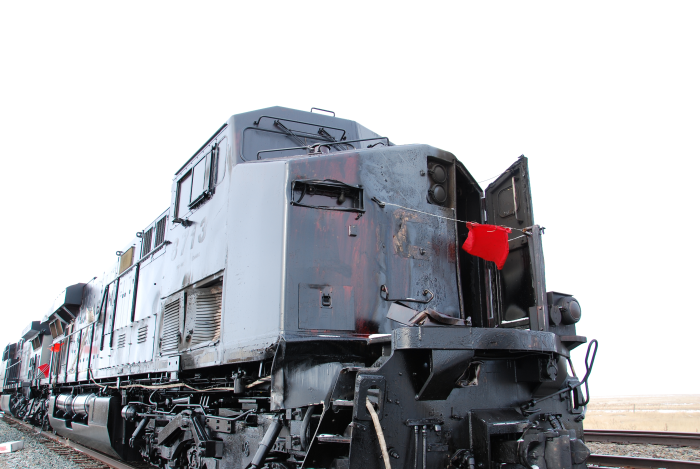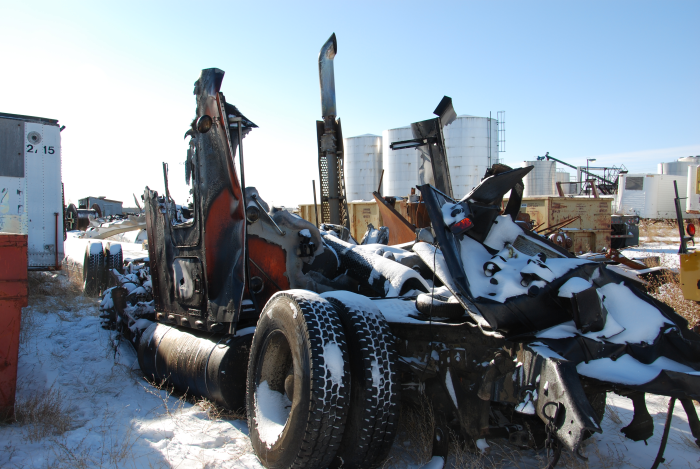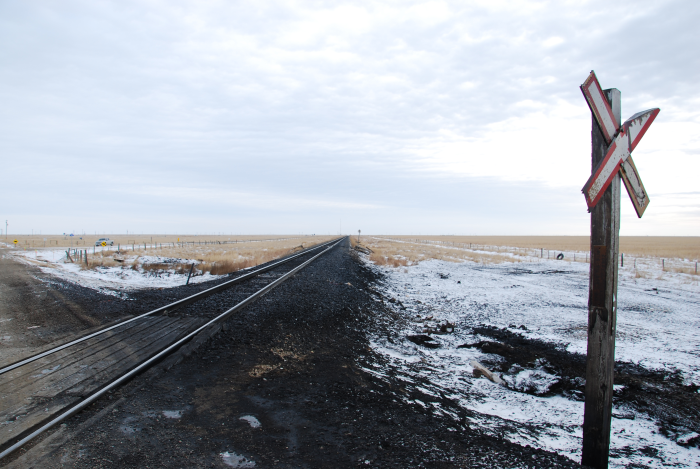Crossing collision
Canadian Pacific Railway, freight train 118-19
Mile 50.61 Brooks Subdivision
Tilley, Alberta
The occurrence
On 19 January 2013, at 1523 Mountain Standard Time, eastward freight train CP 118-19 struck a vehicle at a level crossing at Mile 50.61 of the Brooks Subdivision. As a result of the collision, both the vehicle, a tanker truck loaded with petroleum crude oil (UN 1267), and the lead locomotive caught fire. The driver of the tanker truck and the two train crew members sustained minor injuries.
Media materials
News release
Numerous factors contributed to January 2013 crossing collision between tractor-trailer and freight train in Tilley, Alberta
Read the news release
Deployment notice
Transportation Safety Board of Canada deploys an investigator to the site of a rail accident near Tilley, Alberta
The Transportation Safety Board of Canada (TSB) is deploying an investigator to the site of a rail accident near Tilley, Alberta. At approximately 15:25 MST, on Saturday 19 January, a CP freight train struck a tanker truck carrying crude oil. The TSB will gather information and assess the occurrence.
Investigation information
Download high-resolution photos from the TSB Flickr page.
Class of investigation
This is a class 3 investigation. These investigations analyze a small number of safety issues, and may result in recommendations. Class 3 investigations are generally completed within 450 days. For more information, see the Policy on Occurrence Classification.
TSB investigation process
There are 3 phases to a TSB investigation
- Field phase: a team of investigators examines the occurrence site and wreckage, interviews witnesses and collects pertinent information.
- Examination and analysis phase: the TSB reviews pertinent records, tests components of the wreckage in the lab, determines the sequence of events and identifies safety deficiencies. When safety deficiencies are suspected or confirmed, the TSB advises the appropriate authority without waiting until publication of the final report.
- Report phase: a confidential draft report is approved by the Board and sent to persons and corporations who are directly concerned by the report. They then have the opportunity to dispute or correct information they believe to be incorrect. The Board considers all representations before approving the final report, which is subsequently released to the public.
For more information, see our Investigation process page.
The TSB is an independent agency that investigates air, marine, pipeline, and rail transportation occurrences. Its sole aim is the advancement of transportation safety. It is not the function of the Board to assign fault or determine civil or criminal liability.


